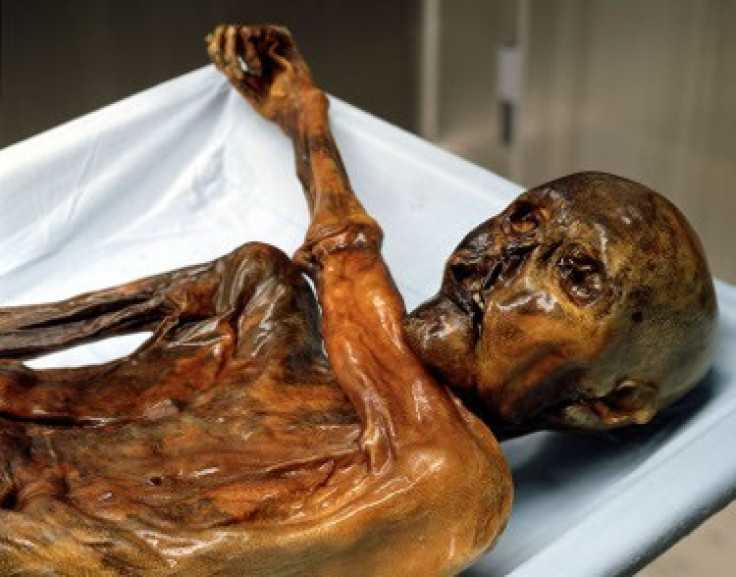Iceman Otzi: Living Relatives of 5,300-Year-Old Mummy Found in Austria

Austrian scientists say they have discovered the living descendants of Otzi, the 5,300-year-old mummy who was found preserved in the glacier ice of Swiss Alps in 1991.
Dubbed as the Iceman, Otzi was earlier thought to have its closest genetic match living in Sardinia. However, the ancient mummy today has his living relatives in Tyrol in Austria, according to scientists at the University of Innsbruck.
"These men and the 'Iceman' had the same ancestors," Walther Parson of the Institute for Forensic Medicine in Innsbruck told the Austria Press Agency (APA).
Scientists arrived at the conclusion by DNA analysis of 19 now living Tyrolean. The analysis showed that the Tyrolean men had same genetic mutations as Otzi's and were thus categorised in the same haplogroup, the genetic group used for defining people with common ancestor.
"There are parts of the human DNA, which are generally inherited unchanged. That's why we humans can be summarized with the same mutations in so-called haplogroups," Parson explained.
Otzi had the haplogroup G, sub category G-L91, and researchers found the 19 Tyrolean with this genetic group and subgroup.
Meanwhile, the reaserchers have not informed the 19 individuals of their common ancestry with Otzi.
Otzi was discovered by Nuremberg couple Erika and Helmut Simon on 19 September 1991. For the past two decades, the mummy has been a subject of research. Earlier, it was thought to be a body of a mountaineer but tests proved that it was a Neolithic man, who lived about 5,300 years ago, and got mummified in the glacial ice over time.
In March, scientists revealed that Otzi was murdered and died from a blow on his head; he had been shot in the back with a blunt arrow. Further analysis of his stomach content showed that Otzi's last meal consisted of nourishing food and drink.
© Copyright IBTimes 2024. All rights reserved.









